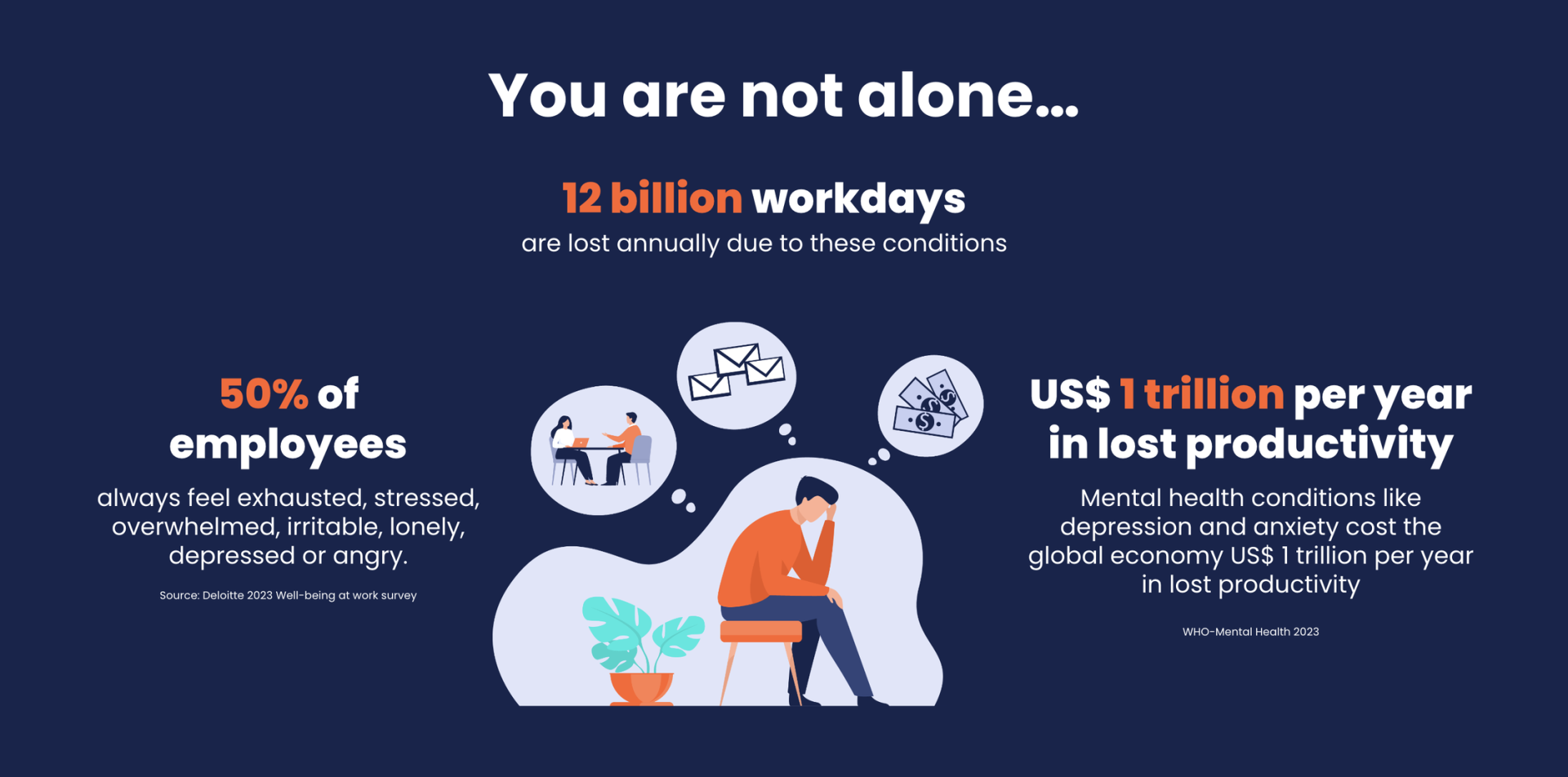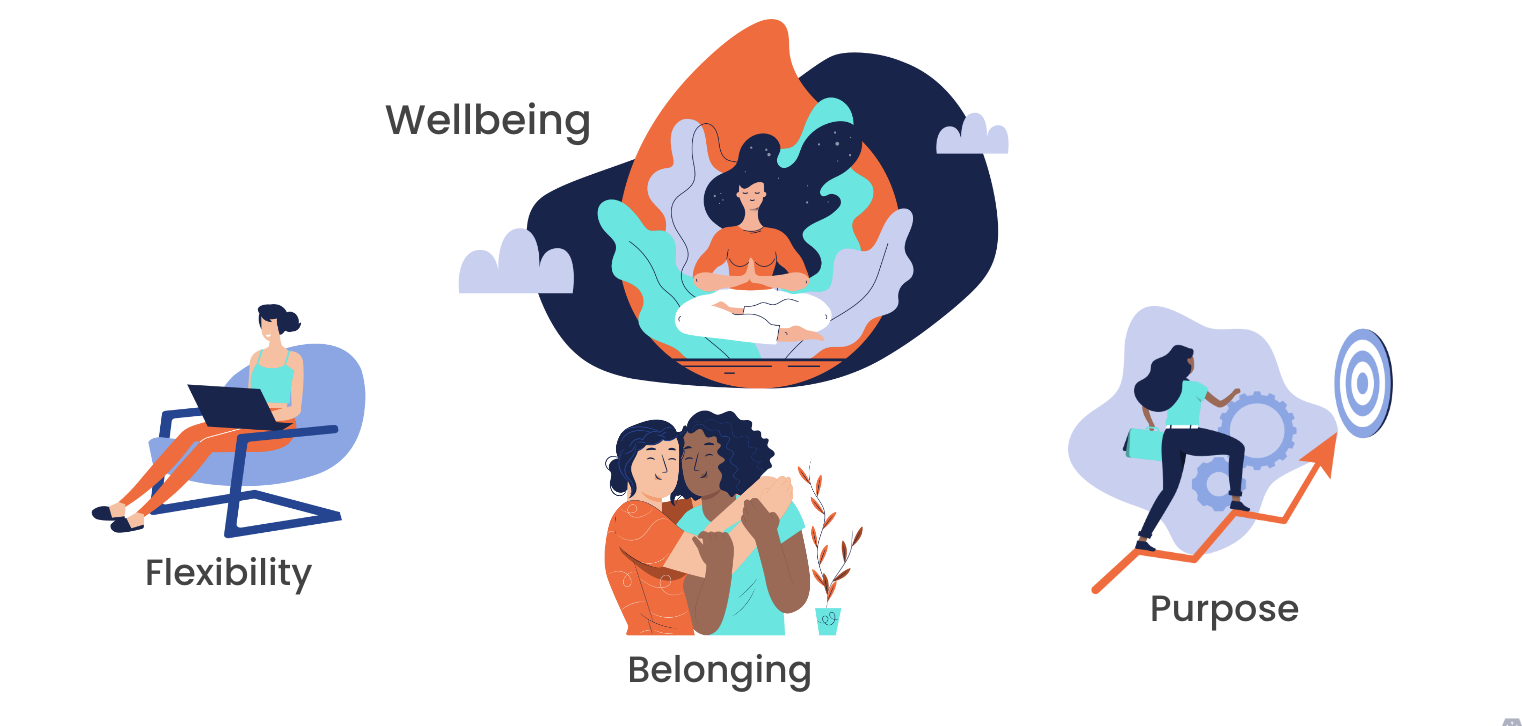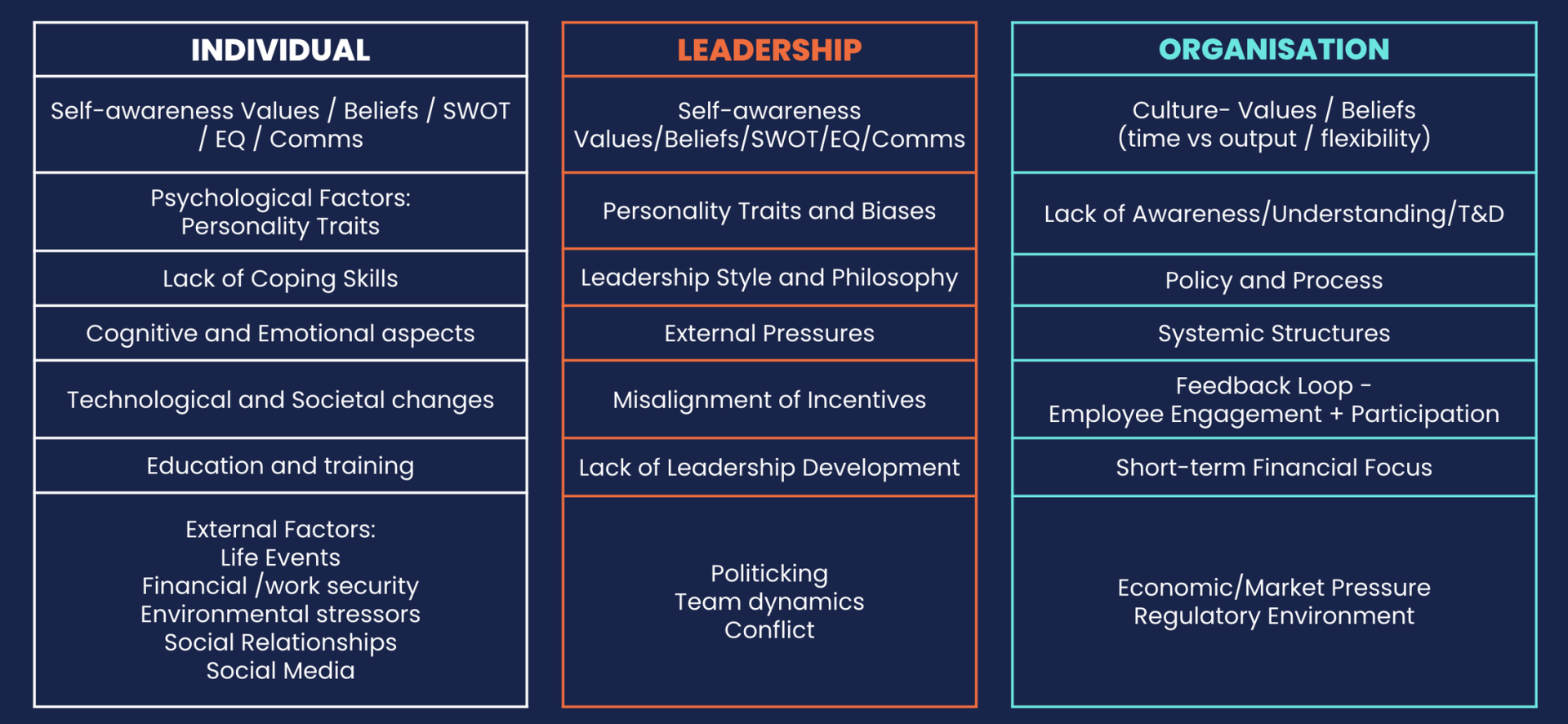The stats are there. We know it’s true. People are struggling to comprehend and navigate an increasingly complex world. And companies are struggling to respond to this. While mental health and wellbeing continue to be hot topics in the workplace, there’s still a disconnect between the issues employees are facing and the interventions being offered by organisations. A lot of companies are throwing money and energy into wellness strategies, but people are still burning out.
So then, what’s not working? What aspects are we missing? Where should we be turning our attention to?
So then, what’s not working? What aspects are we missing? Where should we be turning our attention to?

A variety of factors influence our wellbeing, such as societal, environmental, and economic issues. But many of these are beyond our immediate control. Therefore, our attention should hone in on what we can influence to create equilibrium: the individual, the leader, and the organisation. These three interconnected elements are what serve as the cornerstone for crafting effective wellness interventions and are what will provide individuals with the skills to cope with the unexpected.
Let’s dive into each element!
Let’s dive into each element!

#1: The Individual
- Self-awareness for every individual on a team is key to unlocking so much of the why behind what we do, feel and say.
- At the heart of our behaviour lies our values and beliefs and these allow us to determine person-organisation-fit.
- Understanding our personalities, provides insight into how we handle and navigate stress and prevent burnout. Stress is not a one-size fits all.
- By gaining insight into self, individuals can align their roles and responsibilities with their strengths and values, ensuring a better role-fit in the workplace.
- Moreover, self-awareness empowers employees to establish boundaries and advocate for their needs with confidence.
Reflect on the individuals in your team:
- Do you feel your team members hold similar beliefs and values to the organisation, to a reasonable degree? Do you think they are inspired by the beliefs and that they create a sense of alignment and ease?
- Are there certain beliefs about themselves that are limiting or holding certain individuals back? Could these be causing stress and overwhelm? How might you help them to unearth and let go of these? Is Imposter Syndrome holding them back? (When people believe in themselves and their ability, they don't get as easily stressed about their ability to tackle the unknown).
- Are your team members clear on their personal stressors/response to stress?
- Are they aware of what is within or outside of their circle of control? Do they know where/how to keep their focus on what is within their control?

#2: The Leader
- Leaders need to engage in self-reflection too! This involves examining their personality traits, biases, values, and response to stress, as well as assessing their leadership style.
- When leaders partake in a learning programme, it sets the tone for the entire team of humility, growth and learning. Leaders should provide team members with clarity around their roles to ensure that there is a great person-role fit. They need to connect the role back to the company's purpose and mission to show the individual how they contribute to the success of the company and ultimately the purpose of the company - so that they can consistently see their value.
- Leaders are tasked with supporting individuals, mitigating workplace politics and conflicts, fostering psychological safety and building a collaborative and inclusive culture. Connecting the team with each other will create a sense of cohesion and belonging and joint purpose.
- By providing continuous feedback leaders enable the growth of their team members and calm the ‘stories in their head’. People work best when they know where they stand, that their leader backs them and they feel a sense of belonging. This keeps people in a state that is conducive to performance rather than a space where they are spiralling out, impacting their wellbeing and stress response.
- We need to better equip our leaders with the right skills for them to balance what their individuals need and what the organisation needs.
Reflect on the leaders in your organisation (or yourself!)
- How are your leaders helping individuals identify their strengths? How are they getting each person to become aware of what is within their control and what their needs are?
- Are your leaders trained to to support their individuals to be in the optimal headspace? Can they connect individuals to their role and the purpose of the company? Do they know how to communicate this consistently?
- Do your leaders know how to build deep relationships with team members and how to foster cohesion?
- Do your leaders lead by example?
#3: The Organisation
- Despite professing a commitment to employee wellbeing and prioritising people, leaders and organisations often fail to align actions to go along with these stated values. For instance, an organisation may say it values learning but does not create the space for learning to actually take place.
- The ethos and culture of an organisation is significantly shaped by the influence of its leaders.
- Recognising the vital role that wellness plays in the leadership realm is crucial for ensuring the success and happiness of your team members and the organisation as a whole.
Reflect on the organisation:
- Are your company's values enacted or espoused? Does your structure, systems and policy align with your values and behaviours? Have you assessed how it creates flexibility and autonomy?
- Do you have a culture of trust/positive intent? Or are people scared and constantly blaming others (this creates a stressful work environment).
- Do you have low entropy in your organisation?
- Are there enough feedback loops?



